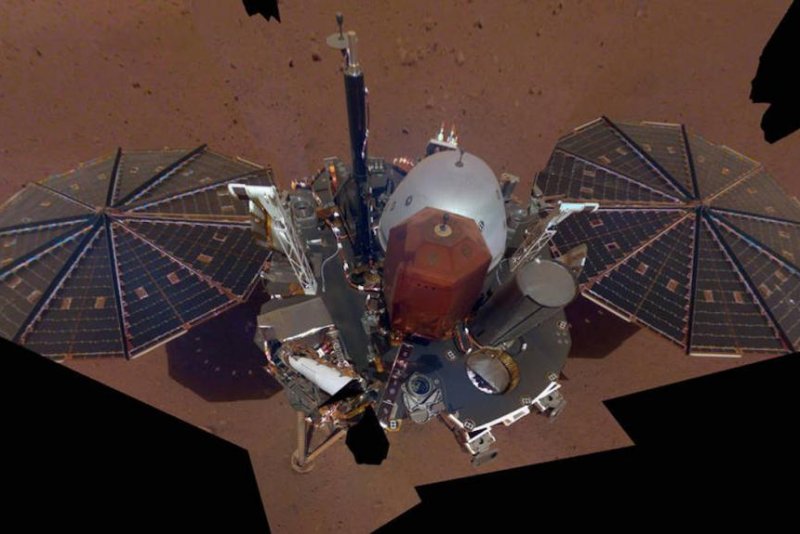InSight's first selfie is actually a mosaic of 12 images stitched together by NASA scientists. Photo by NASA/JPL-Caltech
Dec. 12 (UPI) -- NASA's InSight lander took its first selfie this week.
InSight doesn't have a selfie stick, but the lander doesn't boast a robotic arm. Since it first landed late last month, InSight has been using the camera attached to its robotic arm to survey the surrounding terrain.
This week, NASA scientists stitched together 12 images to build a mosaic selfie.
While InSight is the star of the latest selfie, scientists are most interested in characteristics of the Red Planet's surface. Survey images suggest mission scientists chose the correct landing spot on Mars' Elysium Planitia.
"The near-absence of rocks, hills and holes means it'll be extremely safe for our instruments," Bruce Banerdt, InSight's principal investigator at NASA's Jet Propulsion Laboratory, said in a news release. "This might seem like a pretty plain piece of ground if it weren't on Mars, but we're glad to see that."
Last week, an InSight image showed the probe's flexed arm, poised to deploy its instruments. In the coming weeks, both its seismometer and heat probe will be positioned on Mars' surface.
The smooth flat surface where InSight landed will allow the seismometer to be placed flush against the Martian surface. The instrument's deployment will mark the first time a seismometer has been placed directly on the surface of Mars. For two years, InSight will stay perfectly still while the domed instrument listens to the seismic waves traveling through Mars.
The patterns of different seismic waves can reveal details about Mars' insides. Scientists hope these patterns will help them better understand Mars' inner structures and composition, as well as offer insights into the Red Planet's origins and evolution.
The sandy composition of the crater floor where InSight is positioned will also allow for easier deployment of the 16-foot heat probe. Hammering through fine sediment is less strenuous than layers of rock.















